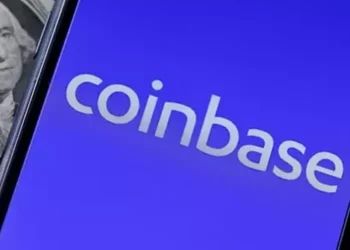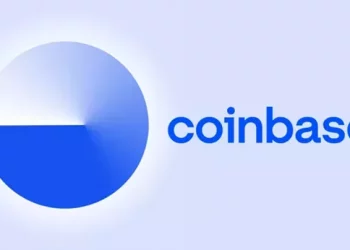Binance, one of the largest and most popular cryptocurrency exchanges in the world, is known for its wide variety of digital assets and continuous expansion of supported tokens. With millions of active users, the platform plays a significant role in the global cryptocurrency market. The decision to list a new cryptocurrency on Binance often has a huge impact, not just on the token itself but also on the broader market sentiment. As such, crypto enthusiasts, traders, and investors are always keen to know: What will Binance list next?
In this article, we will explore Binance’s listing process, trends in new asset selections, and what factors might guide the exchange in choosing which tokens to list next. We will also discuss the most promising cryptocurrencies that may be added to Binance in the future based on various indicators and market predictions.
How Binance Chooses What to List
Before diving into the question of which tokens Binance will list next, it is crucial to understand how Binance selects assets for listing. This process involves several steps that ensure the exchange only supports high-quality, viable, and secure tokens. Here are the main factors that Binance takes into consideration when deciding what to list:
1. Project Legitimacy and Transparency
Binance is known for its rigorous vetting process. The exchange ensures that any project looking to be listed on its platform meets certain criteria for legitimacy and transparency. This includes a thorough review of the project’s team, the technology behind the cryptocurrency, the whitepaper, and the overall business model.
In order to be listed, a project must have a clear roadmap, a use case that solves real-world problems, and a development team with a proven track record. Additionally, Binance looks at the project’s community and social media presence. Tokens backed by strong, active communities and reputable teams are more likely to catch Binance’s attention.
2. Market Demand and Popularity
Market demand plays a crucial role in Binance’s listing decisions. Binance takes into account how much interest there is in a particular token across the cryptocurrency community. This is measured by factors like trading volume, community engagement, and social media buzz.
Cryptocurrencies that are highly sought after or generate substantial conversation within the crypto ecosystem tend to have a better chance of being listed. Binance aims to list coins and tokens that have real trading volume potential to ensure liquidity on its platform. If a token is gaining traction in the market, Binance is more likely to consider listing it.
3. Security and Risk Assessment
Security is one of the top priorities for Binance. Before listing a token, the exchange conducts a thorough security audit. This audit looks at how secure the blockchain technology is, how the token is integrated into decentralized finance (DeFi) applications, and whether there are any vulnerabilities in the protocol.
Any token that shows signs of being susceptible to hacks, vulnerabilities, or any form of malicious activity is less likely to make it onto Binance. Tokens with strong security measures and a track record of safe operations are favored.
4. Regulatory Compliance
Regulatory scrutiny is an increasingly important factor in Binance’s listing process. Binance has faced regulatory challenges in different regions, so the exchange must be cautious about the assets it lists to avoid legal issues. Cryptocurrencies that comply with local regulations and legal frameworks are more likely to be listed.
In particular, Binance focuses on whether a token complies with anti-money laundering (AML) regulations, know-your-customer (KYC) rules, and other local cryptocurrency regulations. Coins that are involved in any kind of legal disputes or regulatory uncertainties are often excluded from the listing process.
5. Token Liquidity and Exchange Activity
Binance takes liquidity seriously because it directly affects the user experience. The platform is known for its high liquidity, which ensures that users can easily trade cryptocurrencies without significant price slippage. Tokens that have demonstrated sufficient liquidity in other markets are more likely to be listed.
Binance also evaluates how well a token performs on other exchanges. If a cryptocurrency is already performing well on smaller or medium-sized exchanges, Binance might view this as an indicator that it has potential for large-scale trading. This can be a signal for Binance to add it to their platform to enhance its liquidity.
The Role of Binance’s Innovation Zone
In addition to its standard listing process, Binance operates an “Innovation Zone,” which is dedicated to high-risk, high-reward tokens. The Innovation Zone allows Binance users to trade newer, less established cryptocurrencies that may have higher volatility or risk but also potential for significant growth. Many of the more speculative tokens are initially listed in this zone.
Tokens that are placed in the Innovation Zone are often experimental, with novel concepts or emerging technologies. Binance uses this zone to give these projects exposure while managing the risks associated with more volatile assets.
What Cryptocurrencies Could Binance List Next?
Now that we understand how Binance selects tokens to list, it’s time to look ahead and consider which cryptocurrencies may be next in line for inclusion on the platform. While it’s impossible to know for certain, there are several factors that point to the likelihood of certain assets being listed.
1. Layer-2 Solutions and Scaling Projects
Layer-2 solutions are gaining momentum within the cryptocurrency space due to their ability to improve the scalability of blockchain networks like Ethereum. As the demand for faster and cheaper transactions increases, Layer-2 projects are becoming essential. Binance is likely to list tokens related to these projects to cater to the growing demand.
Tokens from Layer-2 projects like Polygon (MATIC), Optimism (OP), and Arbitrum (ARB) have already made waves in the crypto community. These tokens have proven use cases and strong community support, making them strong candidates for listing.
Additionally, Binance may list tokens from new Layer-2 projects that aim to solve scalability issues or introduce innovative consensus mechanisms. As Ethereum’s transition to Ethereum 2.0 progresses, we can expect more scaling solutions to emerge, increasing the likelihood of new listings in this category.
2. DeFi Tokens
Decentralized finance (DeFi) has seen explosive growth in recent years, and Binance has already listed several popular DeFi tokens such as Uniswap (UNI), Aave (AAVE), and SushiSwap (SUSHI). Given the ongoing development of the DeFi sector, Binance is likely to continue listing new and promising DeFi tokens that provide unique functionalities in the financial space.
Projects that facilitate lending, borrowing, and decentralized exchanges (DEXs) are at the forefront of this space. Binance may look to list tokens from DeFi platforms that offer novel use cases or advanced smart contract capabilities. Examples include Curve (CRV), Yearn Finance (YFI), and new entrants into the DeFi space that provide decentralized synthetic assets or advanced financial derivatives.
3. Metaverse and NFT-Related Projects
The metaverse and non-fungible tokens (NFTs) have recently gained significant traction in the cryptocurrency world. Binance is already home to tokens like Decentraland (MANA) and The Sandbox (SAND), which are key players in the metaverse and NFT ecosystems. Given the rapid growth of virtual worlds, gaming, and NFT platforms, it is likely that Binance will continue to list tokens from this sector.
New metaverse projects with strong community support or novel tokenomics could be on Binance’s radar. In addition, projects that focus on NFT marketplaces, virtual assets, and digital collectibles may see their tokens listed on Binance as part of the growing trend in the digital space.
4. Eco-Friendly Cryptocurrencies
Sustainability has become an important factor in the cryptocurrency space, especially with concerns about the environmental impact of mining and transaction fees. Several projects are focusing on creating energy-efficient solutions or using alternative consensus mechanisms like Proof-of-Stake (PoS).
Tokens from eco-friendly cryptocurrencies, such as Cardano (ADA), Polkadot (DOT), and Chia (XCH), are prime candidates for listing due to their commitment to environmental sustainability. Binance is likely to list more tokens from projects that emphasize energy efficiency and low-carbon impact.
5. Privacy Coins
Privacy is a growing concern in the digital world, and several cryptocurrencies are designed to offer enhanced privacy features. Coins like Monero (XMR) and Zcash (ZEC) focus on providing anonymous transactions, appealing to individuals who value privacy.
While Binance has historically been cautious with privacy coins due to regulatory concerns, privacy-centric cryptocurrencies with strong compliance mechanisms may become increasingly viable for listing in the future. As privacy becomes a more significant issue in the digital economy, Binance may expand its offerings in this space.
Conclusion
Binance is constantly evaluating new cryptocurrencies to list on its platform, and the decision to add a new token is based on several factors, including legitimacy, market demand, security, regulatory compliance, and liquidity. The exchange has already listed a wide variety of tokens, from established projects like Bitcoin and Ethereum to more niche assets in DeFi, Layer-2 solutions, and the metaverse.
While it’s difficult to predict exactly what Binance will list next, the trends we are seeing in the cryptocurrency market suggest that Layer-2 solutions, DeFi tokens, metaverse projects, eco-friendly cryptocurrencies, and privacy coins may all have a strong chance of being added to the platform in the near future.
For investors and traders, staying updated on the latest developments in the crypto space and keeping an eye on the factors that Binance values when listing new tokens is essential. Whether you’re interested in emerging technologies or established projects, the future of Binance listings is exciting and full of potential for the next big opportunity in cryptocurrency trading.
Related topics:
How Much Does Coinbase Charge in Fees?
















